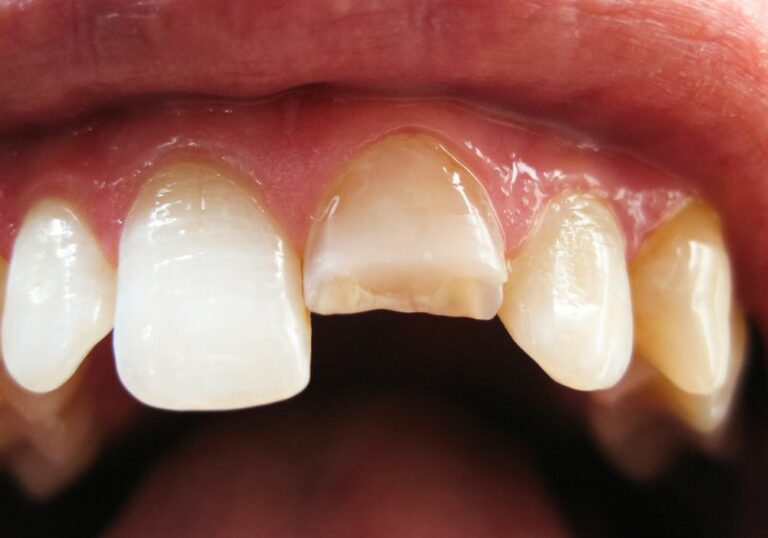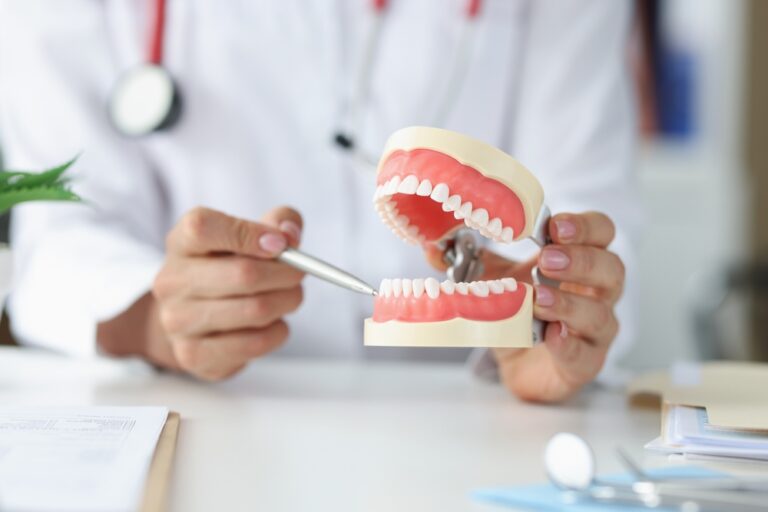Having straight, well-aligned teeth not only looks great, but it also makes keeping your teeth clean easier and can improve dental health. However, if you have a dental implant, crown, veneer or other restoration, you may wonder if you can still get braces to straighten your teeth.
The good news is that in most cases, it is absolutely possible to get braces even if you have a fake tooth. However, there are important considerations your orthodontist will take into account to ensure the braces work safely and effectively.
Why Braces are Used?
Braces apply gentle, constant pressure over time to shift teeth into better positions. By attaching brackets to the teeth and linking them with wires and other components, the braces system allows for specific directional forces to straighten teeth and improve the bite.
Some key issues that braces can fix include:
- Crowded, crooked teeth
- Overbites and underbites
- Crossbites or misaligned jaws
- Gapped teeth
- Deep bites making teeth hard to clean
In addition to improving smile aesthetics, correcting these issues can reduce plaque buildup and risk of tooth decay, difficulties chewing, tooth grinding, and jaw pain.
Orthodontists use braces most often in teens and tweens when jaw growth helps facilitate tooth movement, but increasingly adults are also seeking orthodontic treatment.
Initial Consultation and Evaluation
The first step in pursuing braces with a dental restoration is to schedule a consultation with an orthodontist. At this visit, the orthodontist will:
- Examine the inside of your mouth, teeth positions, and how your jaws meet
- Evaluate the health of your gums, jaw joints, and bone support for the teeth
- Take specialized x-rays of your mouth from different angles
- Make impressions or 3D scans of your teeth
- Check for any issues with your bite when you chew
- Identify any missing, damaged, or restored teeth
This comprehensive evaluation gathering records allows the orthodontist to see how your specific teeth, gums, and bone structure fit together. X-rays and scans also show the roots of the teeth within the bone, which is important when planning tooth movement.
Developing a Custom Treatment Plan
After thoroughly assessing your unique dental anatomy and orthodontic needs, the next step is to develop a tailored treatment plan. The plan will outline:
- What orthodontic issues need to be corrected
- Length of treatment time expected
- Which types of braces make the most sense for your situation
- Order and method in which teeth will be moved
- Any extra treatments or appliances needed
- How dental restorations will be accommodated
A well-crafted treatment plan is key for achieving the desired results efficiently and safely. Plans need to be flexible as each patient responds differently to braces. But starting with a solid roadmap helps avoid complications.
Braces and Dental Implants
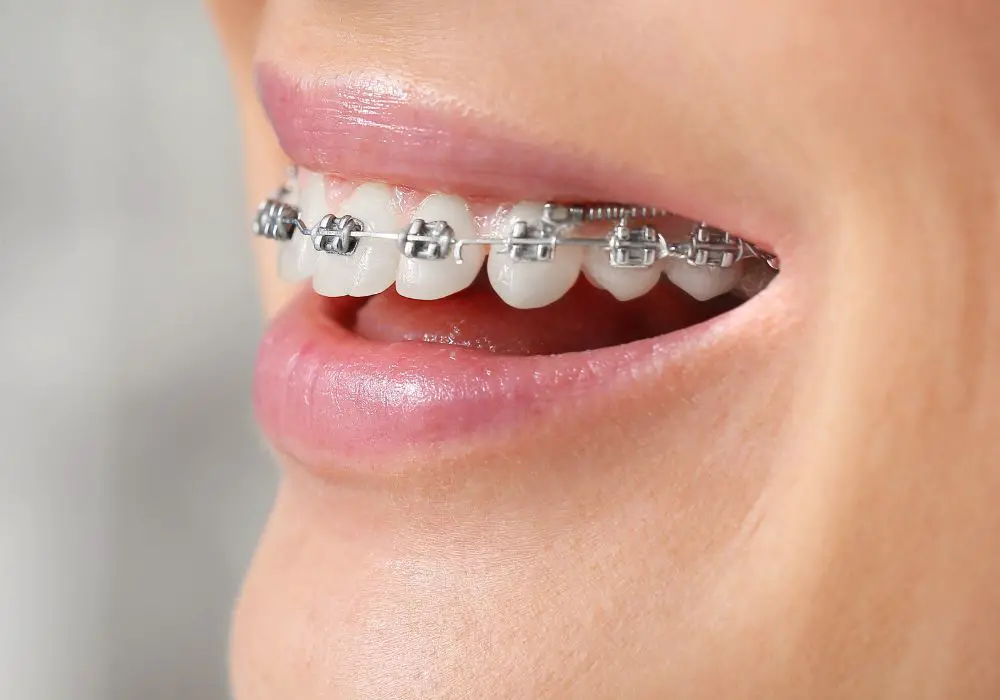
Dental implants involve titanium screws or cylinders surgically embedded into the jawbone, topped with artificial crowns or bridges. Getting braces with implants requires caution.
The orthodontist must be careful not to transmit excessive forces from the braces to the implants, which can damage the bone-implant integration. However, methods exist to facilitate moving other teeth while avoiding disturbances to implants:
- Smaller orthodontic wires – Applying light forces with thinner wires reduces stress on implants.
- Clear aligners – Brands like Invisalign distribute pressure more evenly across all teeth.
- Ceramic braces – These tooth-colored braces are less likely to abrade and damage implant crowns.
- Custom anchorage – Mini-screws, plates or tubes can be temporarily fixed to implants to assist specific tooth movements.
With such adjustments, implants and braces can work together effectively.
Braces with Dental Crowns
Dental crowns are caps custom-molded to fit over the entire visible portion of a tooth. As crowns fully encase the tooth already, braces are applied to the crown itself. But because crowns do not have the same elasticity as natural tooth enamel, orthodontists must take precautions to avoid damaging them.
Issues that can arise with crowns during braces treatment include:
- Crown becoming dislodged – The cement bonding can fail if excessive pressure is applied by braces.
- Damage to porcelain crowns – Metal braces brackets and wires may chip or scratch porcelain.
- Crown coming off with the braces – This is possible if the orthodontic cement interacts with the crown cement.
There are a few ways to reduce risks when getting braces with dental crowns:
- Use gentler force with smaller braces wires
- Choose self-ligating braces which don’t require tightening with elastics
- Opt for tooth-colored ceramic braces instead of metal
- Consider clear aligners like Invisalign that distribute pressure broadly
With care and regular observation, braces with crowns can work successfully. But communication with your orthodontist about any crows issues is vital.
Braces with Tooth-Colored Fillings and Veneers
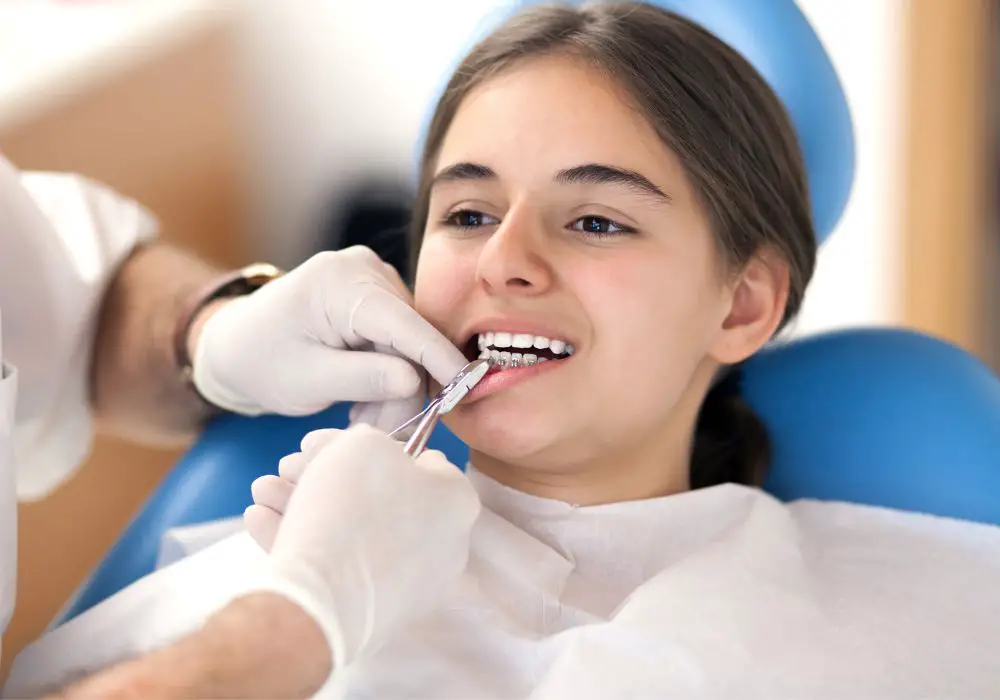
Tooth-colored composite fillings and porcelain laminate veneers are examples of conservative restorations that preserve more natural tooth structure compared to crowns. As these materials bond to the surface of the tooth with adhesive rather than capping the entire tooth, braces can be applied similarly as with normal teeth.
However, the orthodontist still needs to take some precautions, including:
- Selecting ceramic or clear braces to avoid discoloring or damaging veneer porcelain
- Placing brackets and wires carefully to avoid disturbing filling and veneer bonds
- Starting with gentle forces and progressing slowly
- Avoiding putting braces on teeth with very large fillings
With properly balanced force and attention to restoration bonds, braces and fillings/veneers can work together successfully in most scenarios.
The Braces Treatment Process with Dental Restorations
While dental restorations like implants, crowns, and veneers require special considerations, the general braces process remains largely the same:
- Orthodontist takes records, recommends a treatment plan, and goes over what to expect
- Braces are placed on the teeth with dental cement
- Adjustments are made by tightening wires and replacing elastics at regular visits
- As teeth shift, restorations may need to be re-adapted or remade
- Braces are finally removed once the teeth are properly aligned
Total treatment time averages 1-2 years but can vary based on severity of the issues. Having dental restorations typically extends treatment time slightly.
Follow-up visits for tightening and progress checks occur about once a month. Excellent oral hygiene is required to avoid complications like decay or gum disease. Temporary use of rubber bands, headgear, or other appliances may aid specific tooth movements.
Maintaining the Restorations During Treatment
To ensure dental restorations like implants, crowns, and veneers stay intact throughout orthodontic treatment, excellent communication with your orthodontist is key. Make sure to:
- Bring up any problems at adjustment visits
- Get restorations re-cemented if they become loose
- Have damaged restorations repaired or remade promptly
- Use recommended oral hygiene tools to clean around braces
- Avoid hard, sticky foods that could damage restorations
Careful force application and following the orthodontist’s home care guidelines prevents most issues. But some minor repair of restorations during or after treatment is fairly common.
Restoration Adjustments After Braces
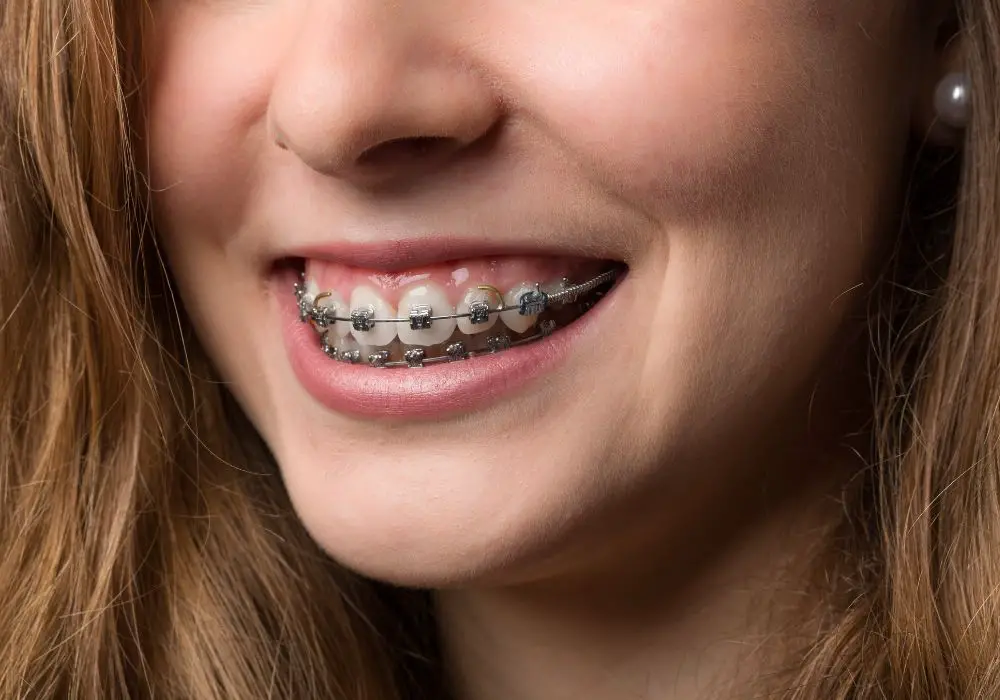
Once the teeth are straightened with braces, existing dental restorations may no longer match properly in color, shape or alignment. Some final modifications are often needed, which may include:
- Crown lengthening – If the gumline is uneven after braces, a crown may need to be re-prepared for a better fit.
- New crowns or veneers – For the best look with your new smile, completely remaking crowns or veneers matched to your realigned teeth may be best.
- Implants replaced – If an implant is damaged from braces, it may need to be replaced and a new matching crown added.
- Teeth whitened – This can improve the match of any existing restorations to newly straightened, lighter teeth.
While further dental work may be needed down the road, the improvements in your smile, dental health, and quality of life make braces a sound investment. With good communication and care, braces can work well even when you have dental restorations like implants or crowns.
Frequently Asked Questions
Can I get braces if I have a dental implant?
Yes, dental implants are usually compatible with braces as long as special precautions are taken and light forces are used. Options like Invisalign or ceramic braces are gentler.
Do braces damage or ruin dental crowns?
There is a risk of damage, but it can be minimized by using light orthodontic forces and tooth-colored braces materials. Any damaged crowns can usually be repaired or remade during or after treatment.
Will a dental crown need to be redone after braces?
Getting a crown remade after braces may be recommended if its shape, color, or fit is compromised after teeth are moved into new positions. This allows optimal aesthetics and function.
Can clear aligners work with dental veneers?
Clear aligners like Invisalign are a great choice if you have veneers, as they won’t damage the veneer surface and distribute pressure evenly to avoid disrupting bonds.
Is it painful to get braces with dental implants or crowns?
Braces can cause mild soreness around teeth and jaws as they shift. But using light forces and making gradual adjustments will prevent excessive pain in teeth with restorations.
Conclusion
While special precautions must be taken, getting braces is certainly possible even if you have an artificial dental restoration like a crown, implant, veneer, or large filling. Working closely with your orthodontist and restorative dentist allows for a customized treatment plan and appliances that straighten your teeth safely and efficiently.
With innovations in materials like clear aligners and ceramic braces, as well as advanced 3D imaging and scanning technology, orthodontic options are better and more precise than ever before. Even with half a fake tooth, you can get a healthy, stunning smile!



